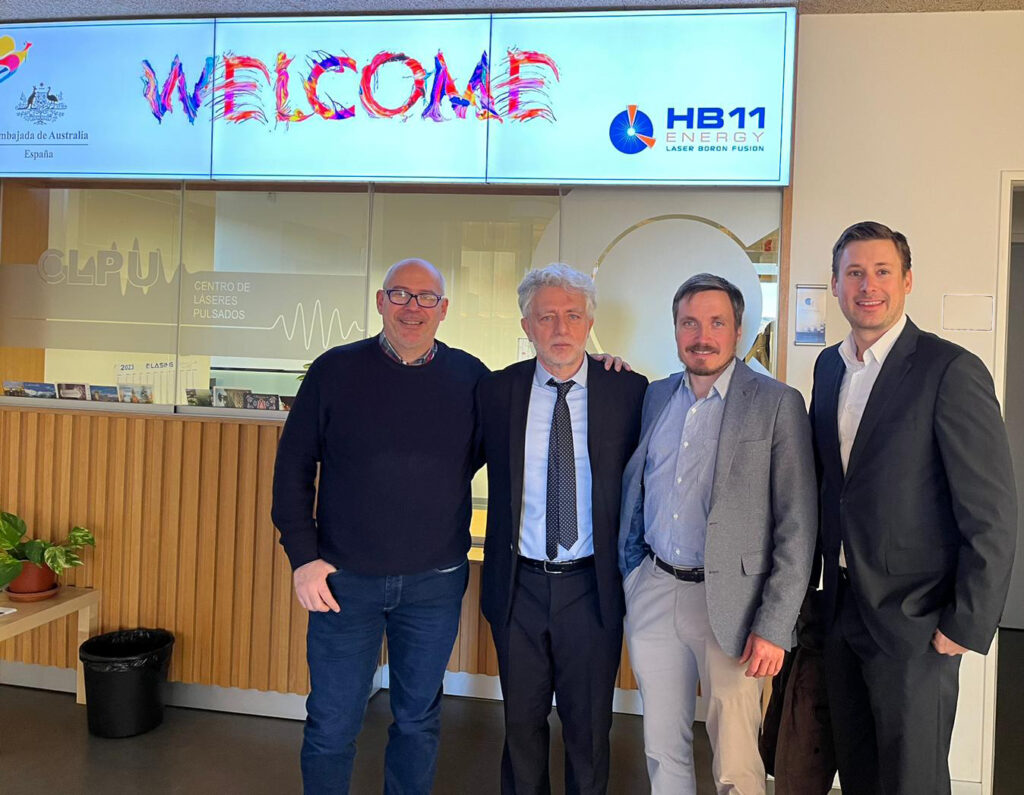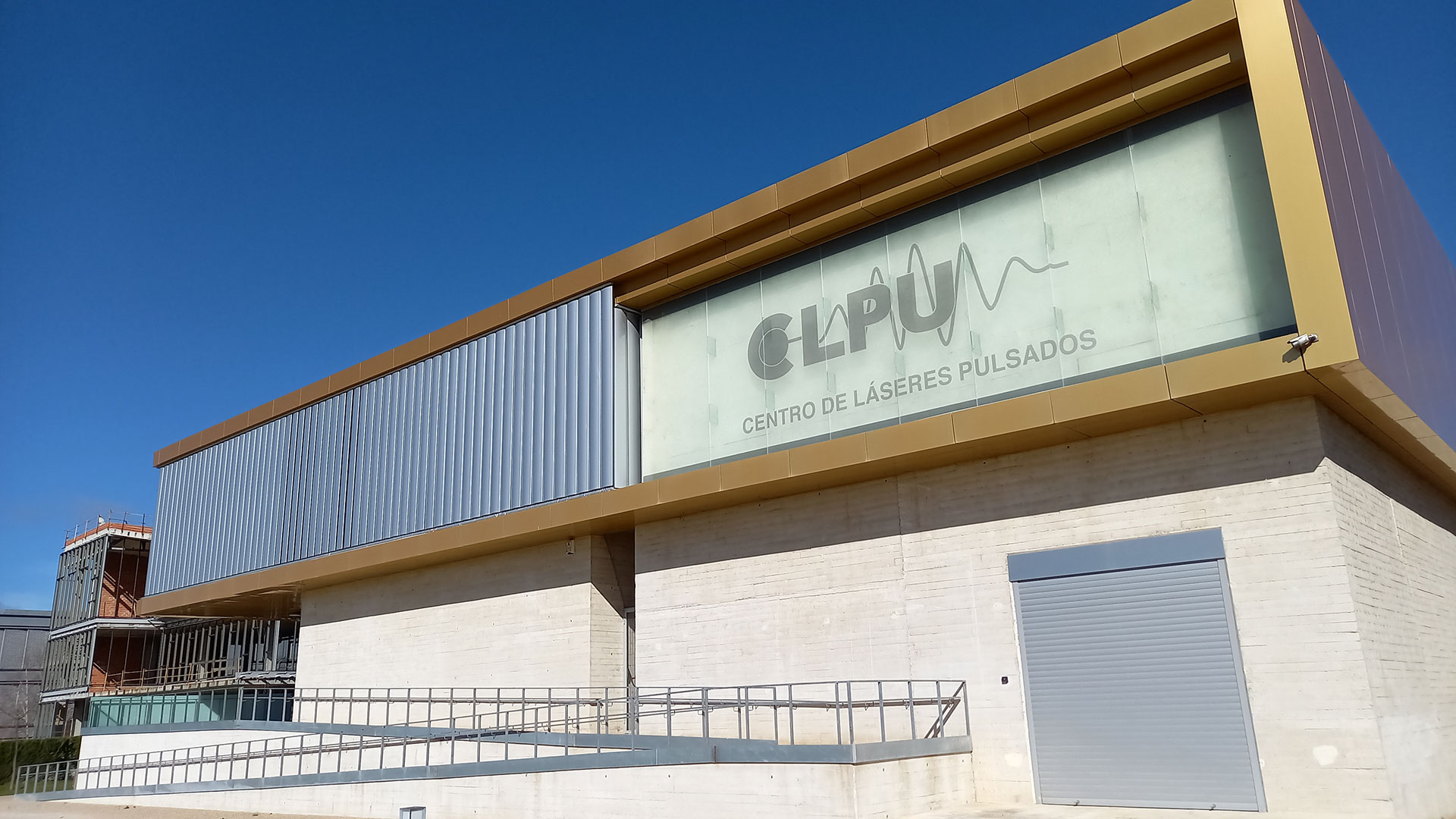Australia’s first laser fusion energy company HB11 Energy has signed a bilateral agreement with the University of Salamanca (USAL) and the Spanish Pulsed Lasers Centre (CLPU), to accelerate laser fusion energy development in Australia and Spain.
The agreement will give HB11 Energy access to Spain’s most powerful petawatt-class laser, operated by CLPU, which uses similar technology to the Livermore National Ignition Facility (NIF) where net energy gain was recently achieved.
Australia’s Ambassador to Spain Sophia McIntyre attended the signing of the agreement, due to the huge national potential for the bilateral partnership to put both countries at the forefront of the global race to clean, safe, reliable, and unlimited energy production using laser fusion.
The Australian Government, through the Australian Research Council (ARC), has also awarded a $560,000 ARC Linkage grant towards a $1.76M project for the development of HB11 Energy’s home-grown hydrogen-boron laser fusion, hosted by UNSW and involving collaborators at Macquarie University, University of Bordeaux and Spain’s CLPU.
Accessing CLPU facilities is particularly critical to HB11 Energy – and Australia as a whole – because Australia doesn’t currently have the laser required for this work, whereas the laser owned by CLPU is a short-pulsed variety which is most advantageous for hydrogen-boron fusion.
Conversely, CLPU is particularly interested in HB11 Energy and its Australian and global collaborative network, because it offers a best-practise approach to sourcing clean and affordable energy through laser fusion, and because of the capabilities it has built such as materials and laser target fabrication.
The combination of Spain’s expertise in nuclear science and ownership of ultra-high intensity laser facilities, with Australia’s capability and personnel in laser science and technology, make for a strategically-matched international partnership that will progress science for fusion energy generation, says HB11 Energy.
Dr. Warren McKenzie said: “The co-founder of HB11 Energy, Professor Heinrich Hora, first theorised about laser fusion in the late ‘70s and pioneered the field at UNSW Sydney. But the high-powered lasers needed to achieve the hydrogen-boron laser fusion did not exist back then like they do now.
“Partnerships with organisations like the University of Salamanca and the CLPU are crucial for fusion energy research, like the research we will be conducting under the ARC Linkage grant, and beyond.
“Australia needs to build its national laser fusion energy capability if we are going to lead the race towards fusion energy. This partnership is one of the many steps HB11 Energy is taking towards this goal, which will raise the profile of Australian research into laser fusion energy at a time when many governments around the world are planning major international laser fusion programs.”
Her Excellency Sophia McIntyre, Australia’s Ambassador to Spain, said: “HB11 Energy’s research with CPLU is groundbreaking and a great example of the growing science and technology ties between Australia and Spain. Collaborations like these place Australia in the vanguard of international research and help to build our scientific knowledge base and ensure we stay competitive.”
Dr Maria Dolores Rodriguez Frias, director of CLPU, said: “Since the achievement of the laser laboratory NIF (US), Ignition is a reality in nuclear fusion. At CLPU we host the most powerful laser in Spain that counts among the three most powerful in the world at a high repetition rate. We are sure that this agreement will enhance our capabilities and strengthen our common interests fostering a green fusion energy in the next decades.”

The agreement signing was attended by:
- Director of CLPU María Dolores Rodríguez
- Scientific advisor at CLPU and long-time HB11 Energy collaborator Dr. Luca Volpe
- HB11 Energy’s director and co-founder Jan Kirchhoff
- HB11 Energy lead scientists Dimitri Batani and Sergey Pikuz
- Minister of Education of the Junta de Castilla y León, Rocío Lucas
- Rector of the University of Salamanca, Ricardo Rivero
It follows HB11 Energy’s recent establishment of a coalition of global laser technology heavyweights designed to kickstart Australia’s laser industry and develop a petawatt-class laser facility locally.
It also follows a CLPU experiment on proton boron fusion performed by a large collaboration of academics led by HB11 Energy, which is now one of very few laser experiments globally that has actually demonstrated a material number of fusion reactions.

